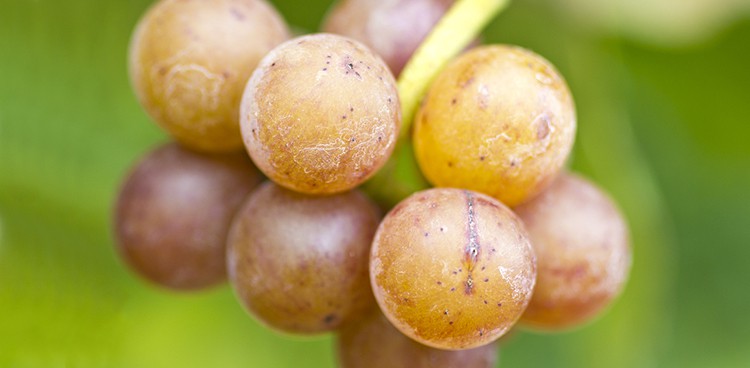
The cheese announced itself before it was even out of the bag. My friend Juan-Pedro procured it from a smoky bar in Cádiz, Spain, the kind of place where chunks of cheese and sausage come free with glasses of sherry. We cleaved off oily, crumbly chunks, nibbling tentatively. On the palate, it was a romp through a field of wildflowers and dry grasses where wooly sheep and wild animals roam. The acidity was maniacal, spicy in its tang. Flavors were explosive and all encompassing.
So what to drink? Short of a fortified wine like sherry, what would stand up to this cheese? I chose gewürztraminer. When it comes to pairing white wines with stinky cheeses, this grape variety is an overlooked and underappreciated champion.
The name is a stumbling block for many people (it’s pronounced guh-VURTZ-tra-mee-ner), but it’s terrifically informative: Tramin is the municipality in northeastern Italy where the grape originates and gewürz means “spice” in German, the dominant language of this Tyrolean town. There are several grape varieties called “traminer,” in fact, but the pink-skinned one with a piquant scent—gewürztraminer, in local parlance—has now made its way around the world, thanks to seductive aromas and flavors.
The grape grows best in cool climates, such as on the slopes of the Tyrolean Alps or the Vosges Mountains in France, its two main strongholds. In the last decade, gewürztraminer has been grown successfully in Marlborough, New Zealand, along the Finger Lakes in upstate New York, and even on a chilly plateau in Greece’s Peloponnese.
Unlike most white grapes that grow in high altitudes, where they stay lean and tangy, gewürztraminer grapes can get tropically ripe, filling up with notes of lychee, mango, pineapple, and passion fruit. The wine is also incredibly floral, and can smell like a rose garden—one that’s set next to a spice market, that is.
With such a heady personality and alcohol levels that regularly reach 14 percent, gewürztraminer is not a shy wine. In Alsace, gewürztraminer is the wine for choucroute garnie (a dish of cured meats braised in sauerkraut) as it goes toe-to-toe with tangy fermented cabbage and fatty sausage. It’s also de rigueur with Munster cheese. And it worked magic with our stinky Spanish wedge: floral against floral, spice against spice, with enough richness to tamp down the cheese’s wilder tendencies.
Not all gewürztraminers are created equal, however. New World versions are often less intense than Old World ones; richness tends to build with price. For the most luxurious experience, look for sweet, late-harvest versions or any labeled SGN—Sélection de Grains Nobles—a sign they’ve been made from Botrytis cinerea–infected grapes (the mold dehydrates the fruit, thereby concentrating sweetness and often adding a smoky, honeyed flavor). In midwinter gewürztraminers can be a welcome taste of the tropics and an aromatic reminder that blooming flowers are just around the corner—even when it’s 10 degrees below zero.
TEN TO TRY
These gewürztraminers range from light and dry to rich and sweet.
- Keuka Spring Vineyards 2014 Finger Lakes Gewürztraminer (New York)
- Saint Clair 2013 Marlborough Vicar’s Choice Gewürztraminer (New Zealand)
- Fitz-Ritter 2013 Pfalz Spätlese Gewürztraminer (Germany)
- Handley Cellars 2013 Anderson Valley Gewürztraminer (California)
- Tselepos 2013 Arcadia Melissopetra Gewürztraminer (Greece)
- J. Hofstätter 2013 Alto Adige Kolbenhof Gewürztraminer (Italy)
- Domaine Zind-Humbrecht 2012 Alsace Grand Cru Goldert Gewürztraminer (France)
- Standing Stone Vineyards 2014 Finger Lakes Gewürztraminer Ice (New York)
- Cantina Tramin 2013 Alto Adige Terminum Vendemmia Tardiva Gewürztraminer (Italy)
- Kientzheim-Kaysersberg 2009 Alsace Anne de K Sélection de Grains Nobles Gewürztraminer (France)
Feature Photo Credit: “Gewurztraminer White Grape” by Chiyacat | Shutterstock




